When we started on our preparedness journey, I tried to be practical.
In the beginning I made a list of things I used everyday. Literally from the time I woke up: water, meds, t.p, coffee, toothpaste, toothbrush and so on and that is what I started storing. You know, store what you use, use what you store. Then I found I wasn’t alone.
Eventually I started dehydrating (and pressure canning) my own milk for long term storage, because I taste tested all sorts of instant milks, and tried packaged shelf stable milks, and found them to be unpalatable for my taste. Plus, when examining how often I cook with milk it quickly became apparent that I needed to find a storage solution that would keep a supply of milk on hand.

This is the journey of storing milk. For my first batch, I used my Oster dehydrator (no longer available, but I also like the Presto dehydrator). I purchased these nifty fruit roll-up trays and gently poured one cup of milk to each tray.
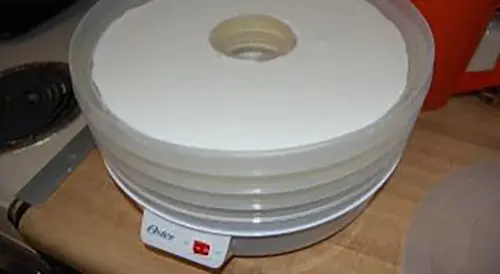
Something is not level here. Not sure if it is the dehydrator or the counter. So I kept turning the trays around to even out the milk.
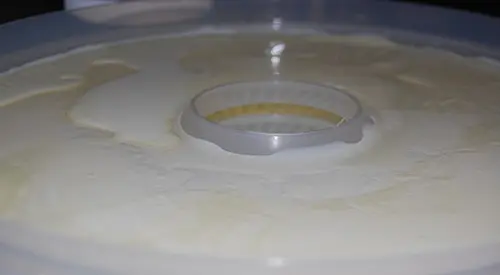
This took about 12 hours. Longer than I expected. Note the flakiness and the “goopy” parts.

For the second batch of milk, I used the same method by putting the fruit roll-up trays in my Excalibur 9 Tray dehydrator.
I have to share, it took me while to save up for the Excalibur dehydrator, but I find it to be worth it’s weight in gold. Seriously. The main advantage is it’s size & the fact you are able to control the temperatures.
Tip: I would suggest that you put the round tray on your Excalibur tray INSIDE the dehydrator & then pour the milk into the tray.
Um, I prepped one on my counter top, tried to carry it over and milk spilled everywhere. My furbabies were very happy. I wasn’t. Then I had to mop my floor.
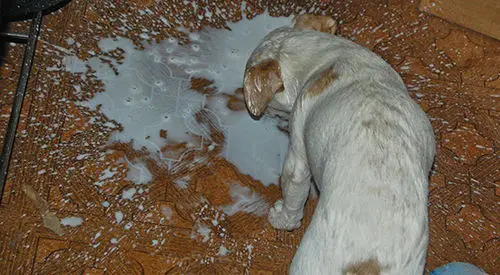
Temp: Set the temperature between 125-130 degrees (F) and dehydrate until dry and flaky. It takes several hours, so be patient.
Again, it wasn’t level, maybe it’s my house. So, every twenty minutes or so, I turned the trays around to more evenly distribute the milk. Turned out better this time.
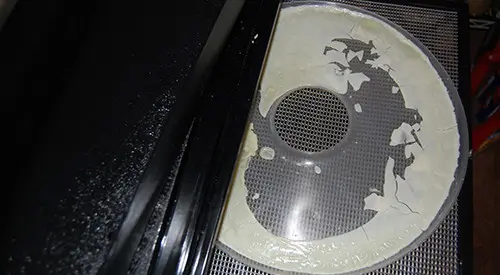
When each batch came out there were several areas that were “goopy”. So I took my Pampered Chef scraper and gently removed all the dried milk, re-trayed & dehydrated a little more.
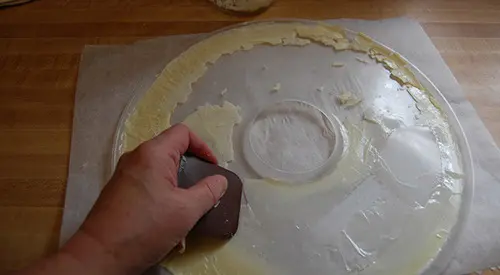
After the milk was nice and flaky, I crumbled up the pieces.

Next the pieces were put in the blender.
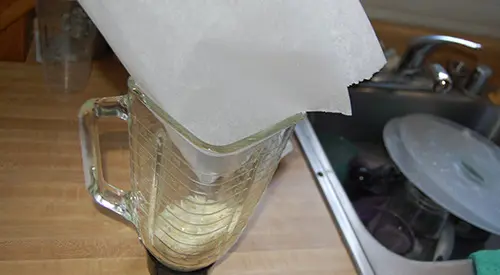
It really is that simple. 7 cups of instant ½ & ½.
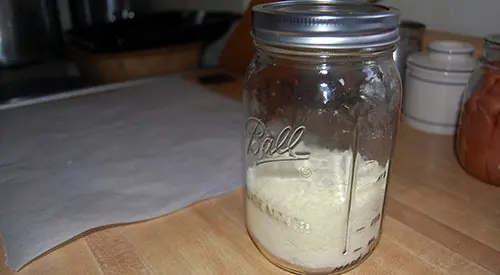
After the jar was full, I vacuum sealed the jar for long term storage.
It takes very little time, but worth it when it comes to minimizing my storage space.
This article was written by Perky Prepping Gramma and first appeared on perkypreppinggramma.blogspot.com
You may also like:
 10 Recipes From “The Great Depression” To Survive The Next One
10 Recipes From “The Great Depression” To Survive The Next One
What To Do If You Find This Odd Berry? (Video)

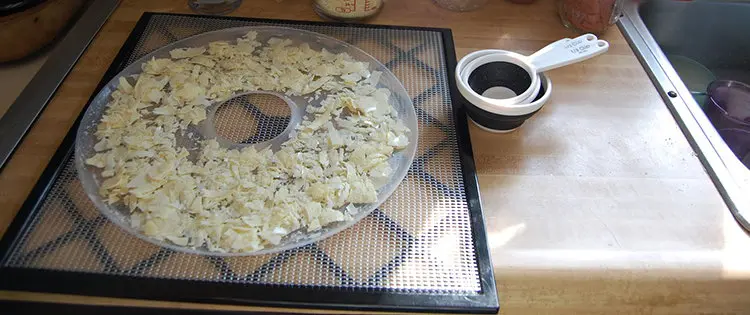








What happens to the fat in the milk. Even 1% milk will have some fat. Maybe that’s the “goopy” part you mentioned. But does the fat also dehydrate?
Thanks for the article! Katy
What type of milk did you use? whole, 2%? Also, when you go to use some of this, how do you get it back to liquid form? Add water? what ratio?
Im also curious about how to rehydrate this.
you add some water.. it’s on google
I have an Excalibur dehydrator and it has square trays, not round. I also tried dehydrating milk and that was a mess. I think this is a joke or something because it does not come close to working.
The writer stated the the round trays were placed on top of the Excalibur trays. You can also see in the pictures that is how she did it.
Can I use for raw milk? Since a2/a2 works really well for my stomach and really want to make milk powder from A2/a2.
Next time you’re in the grocery store look at a box of dehydrated milk. Check out the instructions (ratio) on how to mix it. I would use that as a starting point, and then adjust your mixture to suit your taste.